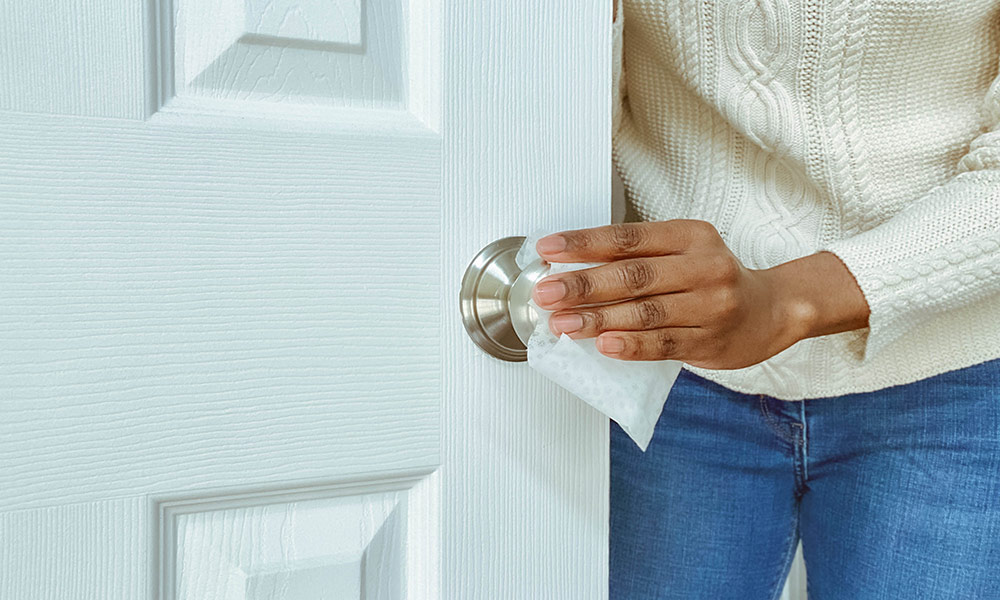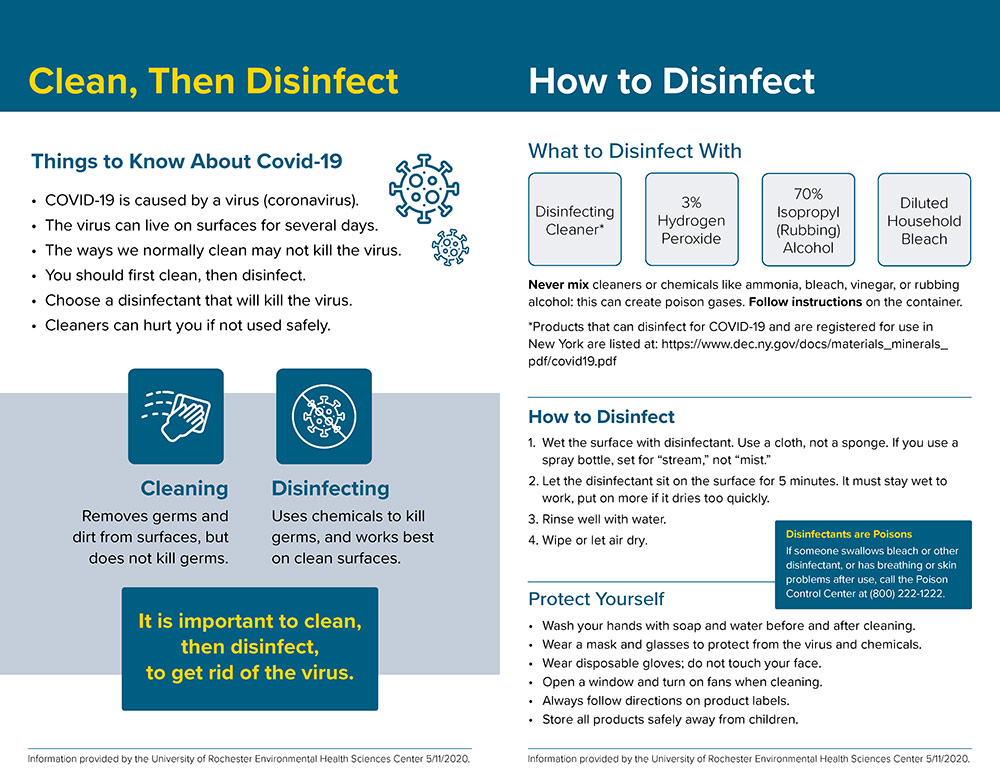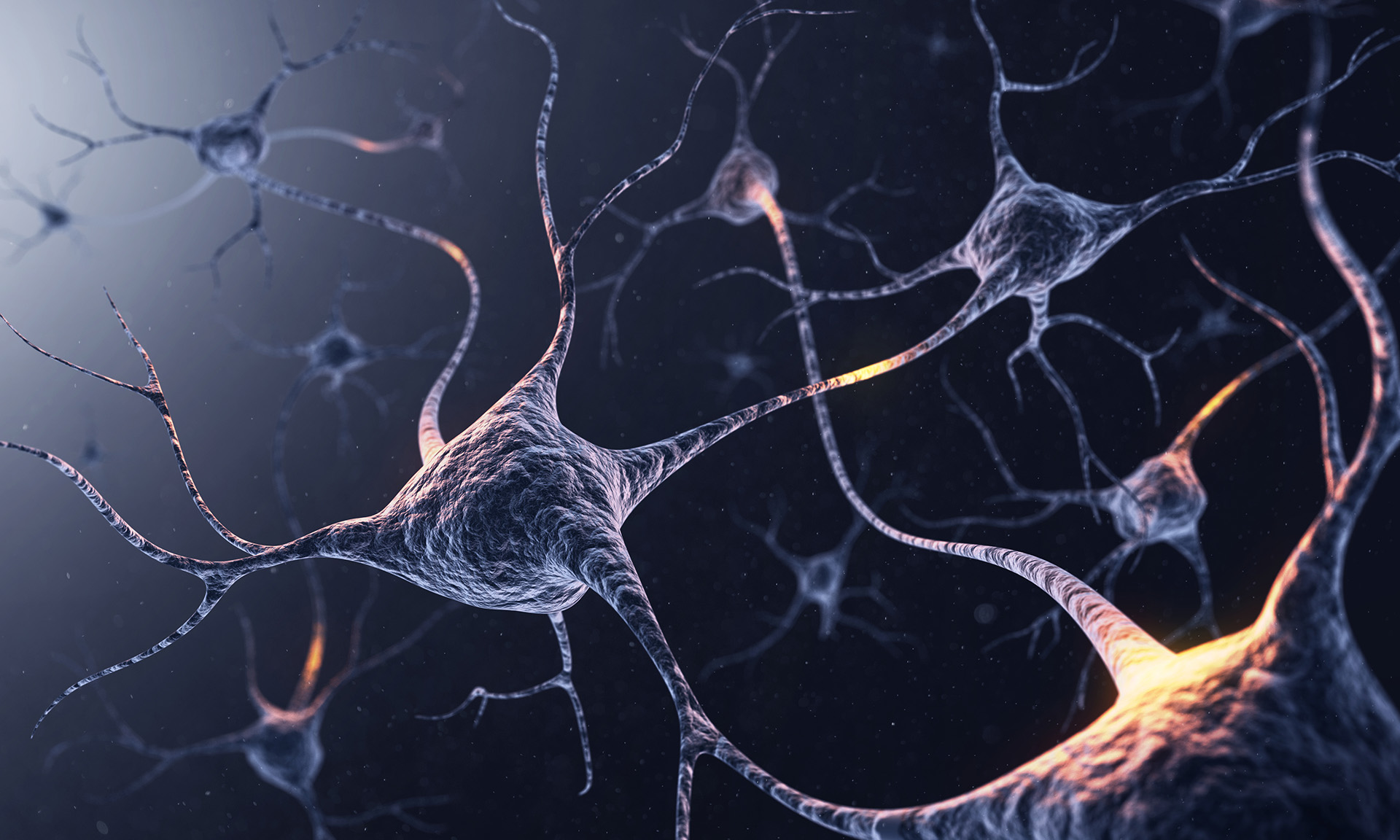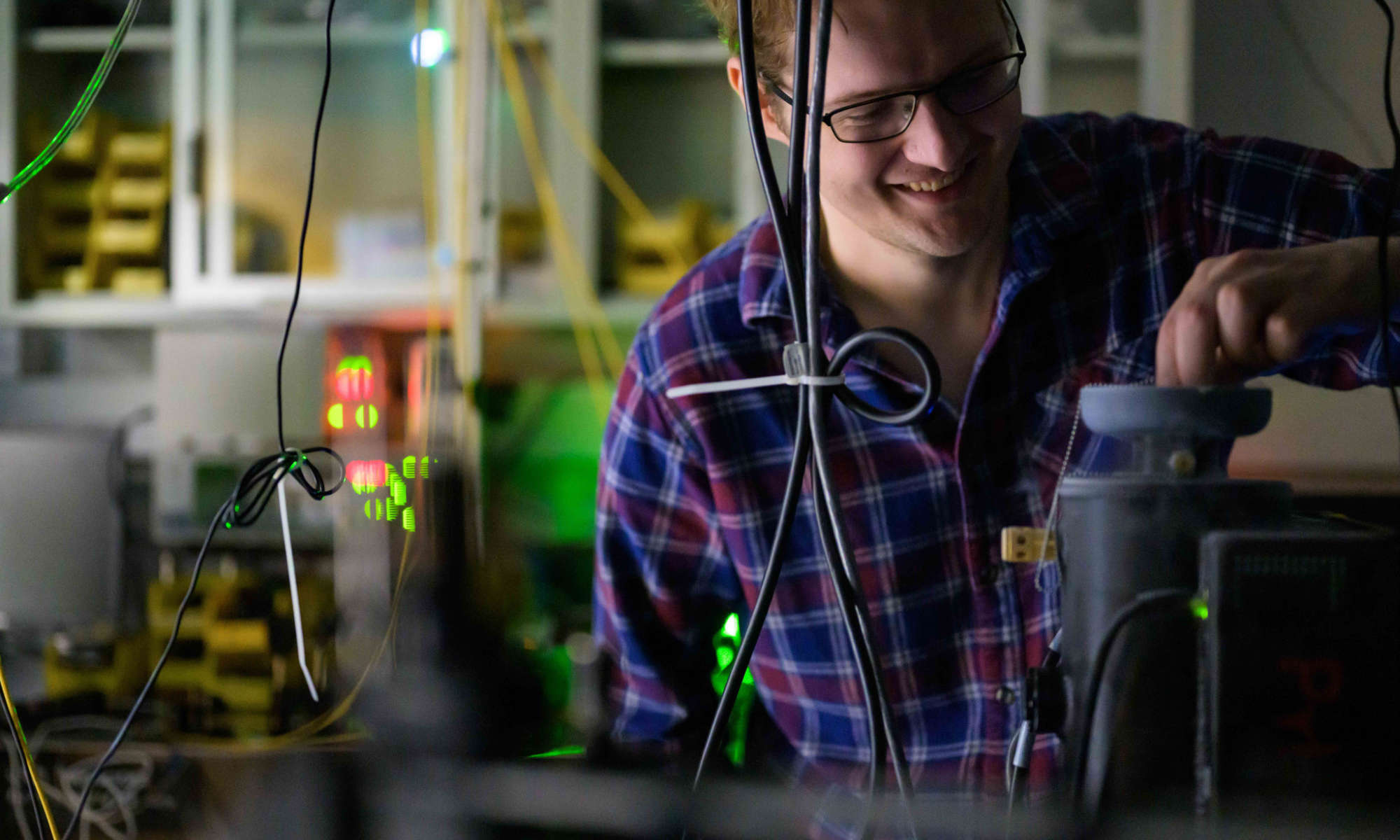As reopening is under way, many are wondering how to continue to keep their loved ones safe from coronavirus. Since March, COVID-19 has required most to remain primarily in their homes and yards, with strict social distancing in effect. But now that trips to a wider variety of stores, visits to salons and hairdressers, and appointments for routine medical care are possible again—the risk of infection may also rise. Experts at the University of Rochester Medical Center have a few tips on how to disinfect your home safely.
Most urgently, however, they warn against accidental poisoning, respiratory distress, burns, and other health problems as a direct consequence of misuse or overuse of disinfectants.
“Some of the things people use [to disinfect] could expose them to chemicals that actually cause more harm, and that poison them, or endanger them, or their children,” says Katrina Korfmacher, an associate professor of environmental medicine at the University of Rochester Medical Center and the director of Community Engagement Core at the University’s Environmental Health Sciences Center.
Health experts have been working hard to get out the message that no disinfectants or cleaning agents should ever be ingested, injected, or used for gargling. Of course, mixing bleach and ammonia is always a no-no.
“There’s a misconception that mixing cleaners can cause a stronger cleaner,” warns Timothy Wiegand, the director of toxicology and an associate professor in the Department of Emergency Medicine at the University of Rochester Medical Center. He explains that mixing bleach and ammonia creates a gas that’s similar to chlorine and can damage the lungs, the eyes, and cause acute respiratory distress.
Wiegand says he’s also recently seen cases of people who have misused cleaning agents to try to disinfect their hands.
“Bleach and ammonia can damage the skin,” he says. Use cleaning agents for surfaces, but don’t mix them together. “They should not be applied to the skin,” he says.
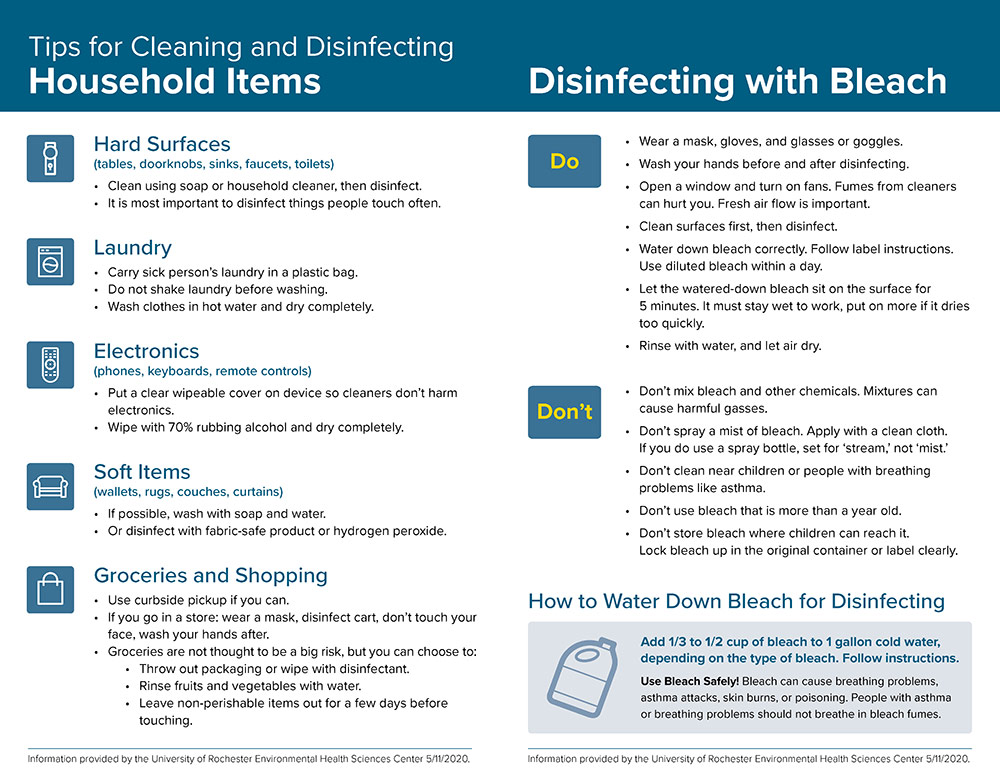
If you’ve been scrubbing your fruits and vegetables—stop. Rinsing with water is enough, say the experts. Certainly don’t use any hand sanitizer, bleach, or other chemicals on your food.
According to Wiegand, the most common toxic incidents that he’s seen during the recent months have involved the use of disinfectants on fruits and vegetables, and accidental child exposure to these cleaning agents. He warns that storing chemicals in inappropriate containers or beverage bottles “is an accident waiting to happen”—especially one involving children ingesting disinfectants and household chemicals.
Who then needs to disinfect their homes? Some worry and over disinfect, says Korfmacher. “It’s not essential to disinfect everything all the time, especially if there’s not a sick person in your house.”
How much you clean depends also on what makes you feel safe as you have people coming in and out of your home, Korfmacher says. That is, “as long as you are not causing harm by using chemicals in unsafe ways,” she cautions.
One of the important things to remember is to clean first and then to disinfect. Why the two-step process? While cleaning with soap and water removes germs and dirt—it does not kill germs. Disinfecting uses chemicals to kill germs and works best on clean surfaces. Not sure what to use for disinfecting for the virus? Here’s a list of products that are registered for use in New York to disinfect for Covid-19, alternatively use hydrogen peroxide, isopropyl (rubbing) alcohol, or diluted bleach.
Many are using too much bleach when disinfecting, the experts warn, which can be harmful. Here are a few steps for mixing bleach and water safely:
Wear protective gear such gloves, mask and goggles/glasses. Mix small quantities so that you have no leftovers that can be accidentally ingested or need to be poured down the drain, causing harm to the environment. Always mix in well-ventilated areas and don’t use a spray bottle—the mist is harmful. Pour 1 teaspoon of bleach carefully into 1 cup of cool water and mix. Use the diluted mixture on a cloth (that can be washed or discarded afterwards) to wipe down surfaces and let it sit for 5 minutes. Click here for detailed Dos and Don’ts on how to use bleach safely.
Lastly, Wiegand warns that alcohol and drug consumption have dramatically increased during the pandemic. Treatment programs are open to help, he adds.
For more tips on how to keep your house safe visit the VirusSafeHousekeeping website.


